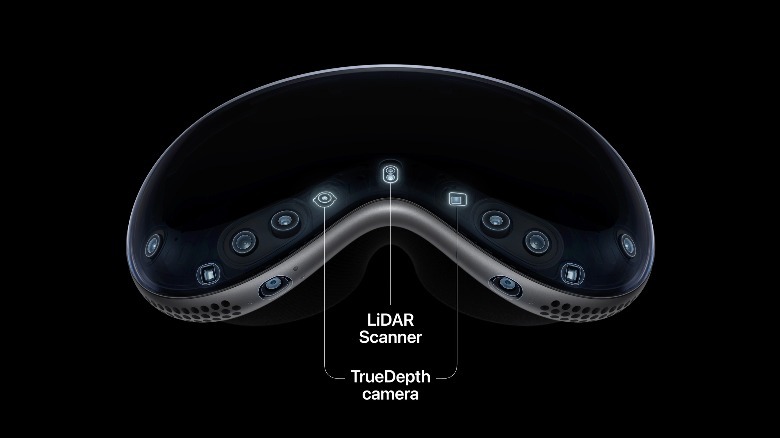The Vision Pro also marks the debut of Apple’s first 3D camera, letting users capture memories in spatial view format, save them to iCloud, and relive them in the future with surround sound experience in tow. Inside is a ring of LEDs that work similarly to the TrueDepth hardware on iPhones, alongside an array of cameras for face tracking. Apple uses an advanced encoder/decoder using a neural network to create your digital persona, complete with volume and depth data to facilitate natural-looking video calls.
Powering it all is a dual-chip design with the M2 silicon at its heart. While the M2 provides the raw processing chops, the new R1 co-processor handles inputs from 12 cameras, five sensors, and multiple mics. Notably, this R1 co-processor allows the Visoon Pro headset to virtually eliminate lag and deliver signals within 12 milliseconds. Another neat innovation is the Optic ID, which is essentially Face ID, but for your eyes and follows the same safety protocols.
To justify the “spatial computer” classification for the Vision Pro headset, Apple has baked in support for its Magic lineup of mouse and keyboard, letting users interact reliably with desktop views seemingly floating in thin air. As cutting-edge as the Vision Pro sounds, it may not necessarily replace your computer, and that’s because it can only operate for two hours with the supplied battery pack.
Stay connected with us on social media platform for instant update click here to join our Twitter, & Facebook
We are now on Telegram. Click here to join our channel (@TechiUpdate) and stay updated with the latest Technology headlines.
For all the latest Entertainment News Click Here

